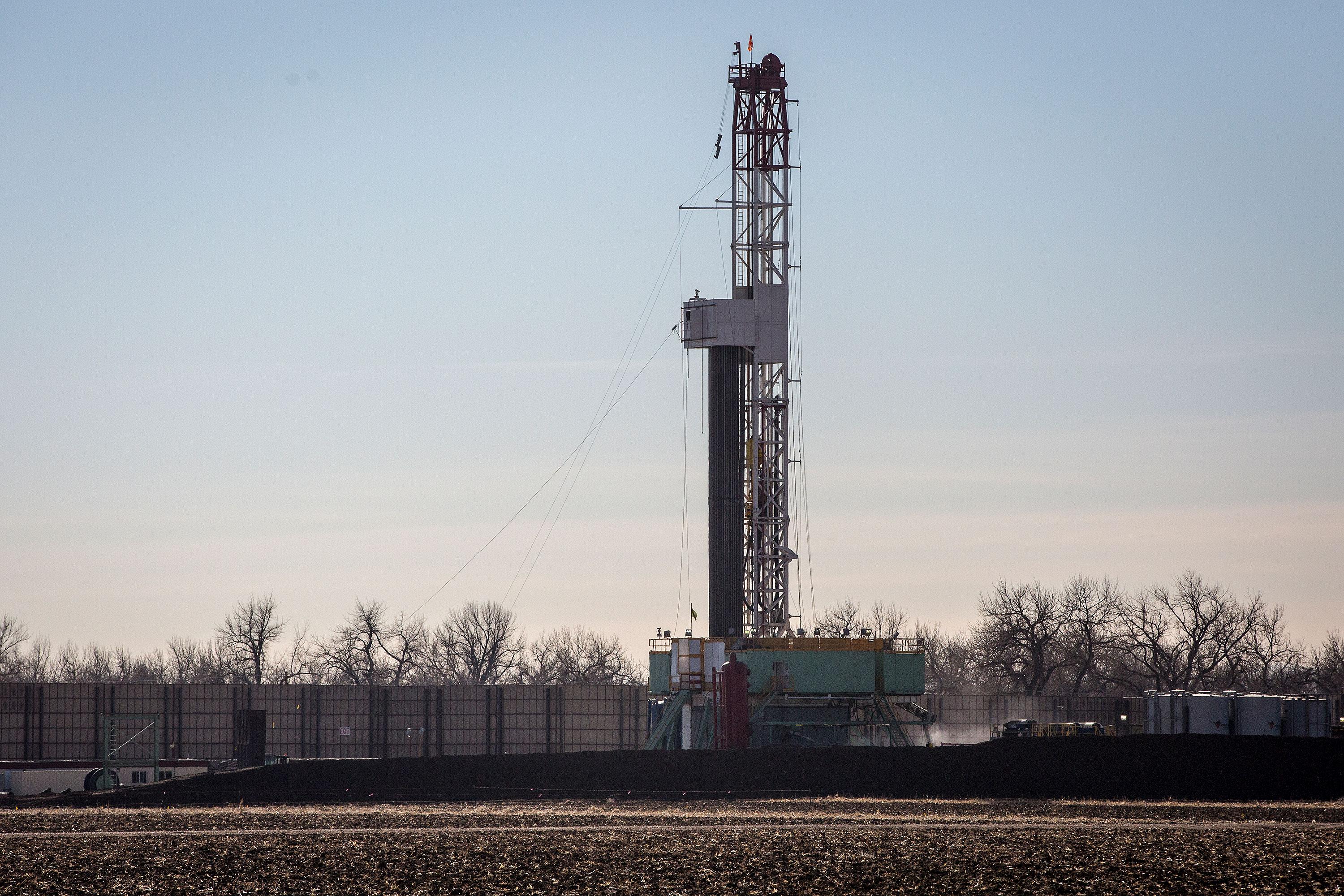
Colorado’s long-awaited and newly released 380-page report on the health impacts of oil and gas operations confirmed what many Colorado residents who live near the sites have suspected for years: State public health researchers found that emissions near drilling and hydraulic fracturing sites can cause negative health impacts.
The science is complicated, though, as are the unfolding responses from state regulators and oil and gas companies.
What does the study look at?
The researchers used emissions data collected from Colorado oil and gas operations to model possible exposures to chemicals released by the fracking process. That model predicts how pollutants move through the air to estimate exposure at different distances, up to 2,000 feet, from a well pad and how that could impact human health.
The 2,000 foot figure is politically important because current state regulations prohibit oil and gas facilities from being closer than 500 feet from homes and 1,000 feet from schools, health care centers and other high-occupancy buildings. In 2018, voters said no to a ballot measure that would have pushed oil and gas wells 2,500 feet away from homes.
The study looks at the potential exposure to chemicals directly produced by oil and gas operations. It estimates the exposure to 47 volatile organic compounds.
The model looks at the “worst-case” scenario, which represents the highest exposure to chemicals that could reasonably be expected from a single well pad during various phases of oil and gas development, combined with certain weather conditions.
Researched focused on when wells see peak emissions in the pre-production phase, which can include drilling, completion, fracturing and flowback. This study doesn’t address wells already in production.
What does the study find?
There may be a risk of negative health impacts like headaches, dizziness and respiratory issues from short-term exposures to the chemicals released from the extraction process during “worst-case” conditions. The symptoms are consistent with what’s reported to the state’s health line.
The study found the risk of short-term health impacts were largely from exposure to benzene, toluene and ethyltoluenes. Those are volatile organic compounds that are released during oil and gas development.
Estimated exposures to most VOCs were below health criteria.
What does the study not address?
A lot, actually. It doesn’t examine the risk of short-term health impacts from average or everyday conditions, and it doesn’t estimate how often worst-case conditions could occur.
Actual reported health impacts weren’t used. Instead models were used to estimate hypothetical exposures and risks of health impacts.
It doesn’t rule out the possibility of health impacts at distances greater than 2,000 feet. The model didn’t consider a range greater than that. It doesn’t define a setback that’s best for public health.
It doesn’t rule out the possibility of chronic health impacts, because it doesn’t comprehensively measure chronic exposures near multiple wells.
It only speaks to the risk of health impacts from being near one well pad, not multiple well pads.
Who did the study, and who paid for it?
The roots of the research reach back to 2015. That’s when then-Gov. John Hickenlooper’s Oil and Gas Task Force recommended a human health risk assessment based on existing emissions rate data.
State health officials released the first of those risk assessments about two years later. It found little danger associated with living near oil and gas sites and didn’t recommend any kind of public health response.
Democratic state lawmakers quickly criticized the study, saying the in-house research lacked transparency and failed to incorporate all available data. The research did, however, recommend “continued evaluation of health risk from more comprehensive exposure data.”
This new study follows up on that recommendation. Rather than conducting the research itself, the Colorado Department of Public Health and Environment contracted ICF, an international consulting firm, to complete the assessment. The work was peer-reviewed and published in the Journal of the Air & Waste Management Association, which is respected enough to be heavily cited by other scientists.
Chris Holder, the corresponding author of the study, declined to comment on the study and directed all inquiries to CDPHE.
What makes this oil and gas study different from all other oil and gas studies?
What is different is that the research comes from a government office, rather than a university or an environmental group. That means the work will be a direct resource for regulators and policymakers.
For Lisa McKenzie, an air quality researcher at the Colorado School of Public Health, it mostly confirms what she and other scientists have already found in other assessments: emissions from oil and gas sites can endanger human health.
“This is what I would have expected to see,” she said.
McKenzie’s research has found a connections between living near oil and gas sites and short-term health impacts, as well as links to heart defects in newborn children. The research has drawn criticism from the oil and gas industry.
What is the oil and gas industry saying?
Lynn Granger, executive director of the Colorado Petroleum Council, raised doubts about the study’s use of statistical models.
“As an industry, what we rely on is actual monitoring,” she said. “Data. Facts. Science.”
In response, McKenzie said the models in the assessment are common and well-respect within the scientific community. While she said it would be ideal to confirm the conclusions through direct observation, that sort of monitoring is expensive and time consuming. In the meantime, she said policymakers should follow the best available evidence, even if it involves modeling.
What will state regulators do with this information?
First, state regulators say they need more data since the study involved modeling. To that end, they’ll begin to gather specific air measurements near oil and gas developments to get a better sense of what air quality looks like.
Second, since the study focused on potential exposure for people living within 2,000 feet of a single oil and gas well, the Colorado Oil and Gas Conservation Commission will apply greater scrutiny to pending permits that fall within this range. COGCC estimates about 200 permits will require greater scrutiny. About three-fourths of those will prompt the COGCC Director’s Objective Criteria, which requires oil companies to do things like consider alternative site locations for proposed wells.
Third, the COGCC said it plans to apply the study’s findings to future rulemaking. The first test will come on Oct. 29, 2019, when COGCC commissioners meet to consider the new mission of the agency. The new mission was set by the passage of SB 19-181, which directs a greater emphasis on mitigating the health and safety impacts of oil development.









